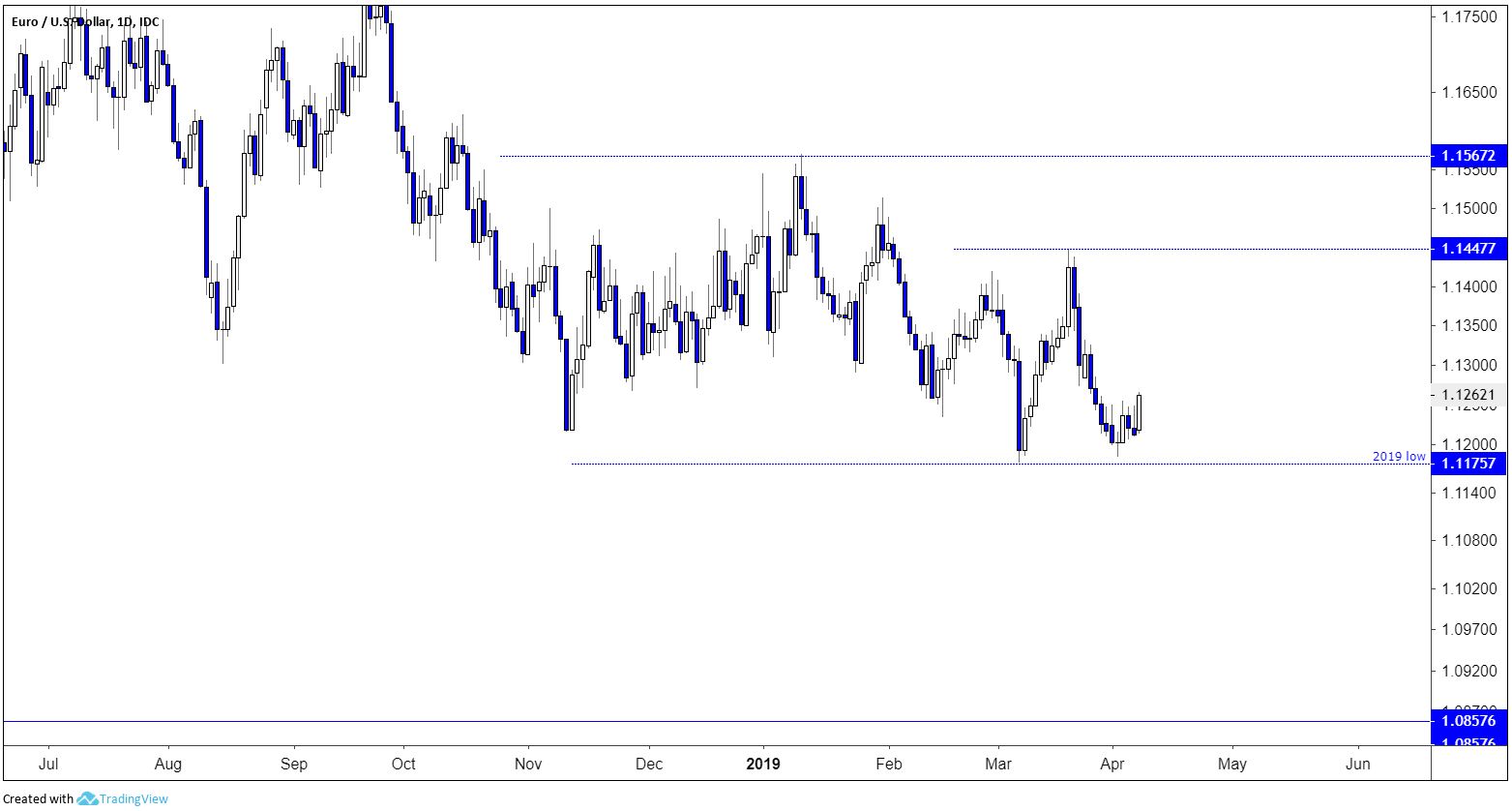The following article was written by ATFX Chief Market Strategist. Alejandro Zambrano.
Forex markets are quiet, and even more so the EURUSD. Since March 28, the price has been oscillating around the 1.1220 level in a 71-pip range and using the daily Average True Range indicator (14), we need to go back to September 2014 to find a similarly quiet episode, and preceding that, the summer of 2007. However, as I will outline below, I suspect we might see a rebound in volatility as early as Wednesday when the ECB hosts its third-rate meeting for the year in Frankfurt.
In 2014, the low volatility period lasted from the start of July 2014 to the first week of September, but both in 2014 and 2007, volatility picked up sharply following the quiet period, and I expect the same for the future.
From a technical point of view, it looks like the EURUSD will trade sideways for longer, and as long as the price trades above its 2019 low of 1.1175, I suspect the price might drift towards 1.14, and be capped by the March 20 swing high of 1.1447. However, my preferred scenario is for the Euro to trade below its 2019 low, and maybe even as early as this week.
I am bearish based on the lack of a rebound in European economic activity. The U.S. and China, have been seen sharp rebounds in their leading indicators such as the PMIs. However, the Euro area has seen the opposite, and it looks like Germany will not be able to escape a third quarter of zero to negative growth.
In the summer quarter of 2018, German GDP contracted by -0.2%, followed by zero growth in the fourth quarter. German Manufacturing PMI was around the 57 mark in July 2018, at the latest March reading it had dropped below the 50-threshold of boom and bust, and landed at 44.10. German annual inflation over the same period dropped from 1.9% to 1.3%.
Euro area indicators are not much better with annual inflation at 1.4% and in a downtrend, while manufacturing PMI dropped to 47.50 from near 55 in July 2018.
The lack of a strong Euro area inflation and most likely lower growth in the months ahead skews the risk lower for the EUR/USD as U.S. indicators have held up better.
Friday’s Non-Farm Payrolls was not enough to send the Euro lower, but this Wednesday we might see a repeat of last month’s ECB rate meeting when the Euro traded lower by 129 pips. If the same were to happen, the EURUSD would be trading at a new 2019 low, and I suspect we might see the price trade to the next major support level at the May 12, 2017 low of 1.0857, as long as the price remains below April’s current high of 1.1254. If I am right on my view and the EURUSD slides below its 2017 low, then the market would be offering a 3.85 times risk-reward ratio trade.
Alejandro Zambrano is ATFX’s Global Chief Market Strategist, and he combines extensive professional experience and a pragmatic attitude to trading, building clients’ understanding of the markets and the rationale behind investing.
Before joining ATFX, Zambrano was the Chief Market Strategist of the FCA regulated broker, Amana Capital. Prior to that he was also the Head Analyst at FXCM’s London research desk. Zambrano has been using his invaluable experience to research the financial markets with a special focus on currencies and macroeconomics, throughout his career. He also covers commodity markets and equity indices. Working for various brokers, Zambrano also developed premium educational programs, and hundreds of people have attended his courses throughout the years.
Risk Disclaimer:
CFDs are complex instruments and come with a high risk of losing money rapidly due to leverage. 71% of retail investor accounts lose money when trading CFDs / Spread betting with ATFX.
You should consider whether you understand how CFDs / Spread betting work and whether you can afford to take the high risk of losing your money.
This market update was provided with an educational purpose, and is the personal opinion of Alejandro Zambrano, and not to viewed as trading advice by ATFX or Red Castle Ideas LTD.

